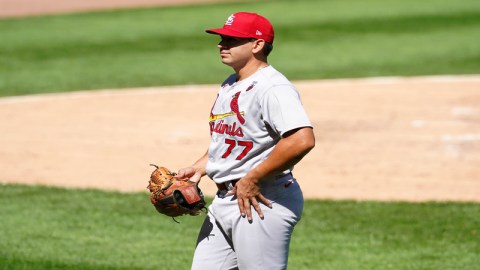At the end of last week, Patriots fans were stunned when Pro Football Focus told them that Tom Brady, the first-ever unanimous MVP of the NFL, was the 33rd-best player in the league in 2010.
Pro Football Focus, a site aiming to be the go-to source of the most in-depth football information, understood that ranking Brady as the sixth-best quarterback would cause a bit of a stir, so the author, Khaled Elsayed, released a lengthy explanation on Monday.
The explanation was roughly 2,000 words and is well worth the read if you want to understand what went into the ranking, but if you need the brief rundown, here goes.
The site ranks players on every single snap with a grade ranging from minus-2.0 to plus-2.0, in increments of 0.5. When it came to avoiding negative grades, Brady was unmatched, getting grades of minus-1 to minus-2 on just 1.40 percent of his 572 dropbacks. That helps explain Brady's incredible 9-to-1 touchdown-to-interception ratio, which set a new NFL standard.
"This is where Brady sets himself apart, avoiding the big mistakes that can kill a team," Elsayed wrote.
However, where Brady fell behind his peers, according to PFF's grading system, was on the spectacular plays. The ranking gives "extra credit," so to speak, for a quarterback who has to hit a receiver in double coverage, use his legs to create plays or throw a touchdown or a big pass in a clutch situation. Using that, we safely assume it's plays like this one that got Brady a 2.0 grade.
However, despite the 14-2 record and despite the great statistics, Brady did not make as many of these superior plays as his peers, according to the rankings. He was given a grade between 1.0 and 2.0 on just 3.67 percent of his dropbacks, while Aaron Rodgers earned those grades on 8.20 percent of his dropbacks. Part of the reason for that is the Patriots have a good system full of good players, meaning Brady doesn't have to create plays on his own in order to effectively run the offense. Rodgers, by contrast, lost his starting running back, Ryan Grant, and his star tight end, Jermichael Finley, early in the season, but he still led the Packers all the way to a Super Bowl victory.
Could Brady have done the same? Maybe — perhaps even probably — but he didn't have to, so he didn't have the "opportunity" to earn the high grades.
Additionally, Brady led the other quarterbacks by a wide margin in passes of fewer than 10 yards (66.85 percent), which were in many cases easy passes that resulted in big yards after the catch by guys like Wes Welker, Danny Woodhead, Deion Branch and Aaron Hernandez.
The explanation stresses two things. First, the difference between being the best player in the NFL in 2010 and the 33rd-best is closer than many people would think (the entire list of 101 represented the top five percent of players in the NFL). Second, the rankings don't indicate that Brady isn't capable of making more of the spectacular plays that result in 1.0-2.0 grades; they simply say that he didn't have to make them to lead the Patriots' offense to a very successful season.
"Does he flourish in the system, or does the system inhibit?" Elsayed wrote. "That's a question [the ranking] poses to me, because we've seen Brady do it all before. Ultimately though, it's kind of irrelevant. What matters at the end of the day is that Tom Brady in New England works. He makes better decisions than other quarterbacks and is adept at not forcing the ball into bad spots (in part because the team is built in such a way that he doesn't really need to)."
Ultimately, PFF's system is not science, but it is thoroughly constructed and executed to a painstaking degree. While you can certainly argue the value or the practical implications of the findings, Elsayed's explanation leaves no room for argument when it comes to the data itself.
What it comes down to, really, is that PFF simply presented a specific way of analyzing players, and in that system, Brady did not excel beyond his peers. It is, however, just one system of analysis, and it obviously won't trigger Bill Belichick to trade his best player to Cleveland for a pair of first-round picks this summer (I think). It doesn't account for leadership, for the unmatched competitiveness or for his ability to every now and then put together the closest thing that football has to a perfect game. That all adds to Brady's value, but in the system of grading, it didn't always help.
As the website says, the mission of PFF is to provide "thought-provoking information on professional football player performance." On that point, regarding Tom Brady, the mission has been accomplished.
Read the full explanation from Pro Football Focus by clicking here.



